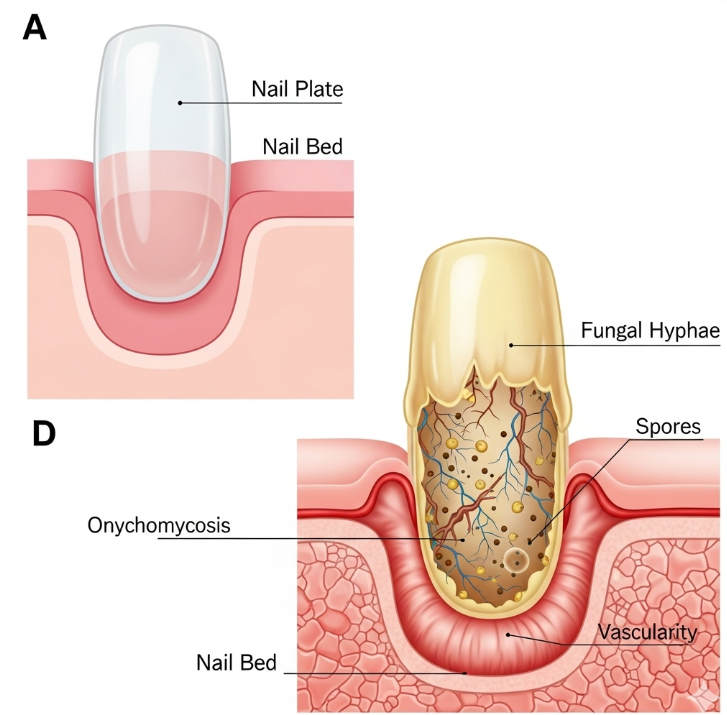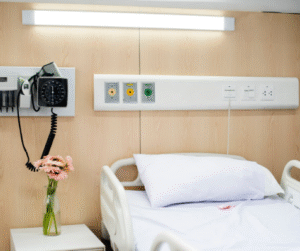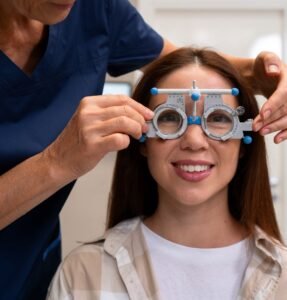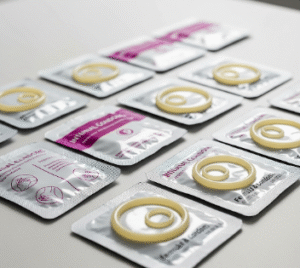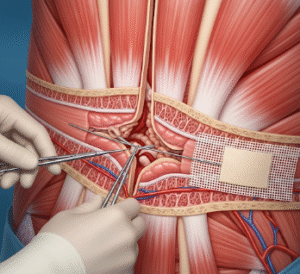Overview
Fungal nail infection, medically called onychomycosis, is a common condition that affects the nails of the hands and feet, leading to thickened, discolored, and brittle nails. The infection is primarily caused by dermatophytes, but yeasts and non-dermatophyte molds can also be responsible.
In Korea, fungal nail infections are increasingly recognized due to lifestyle factors such as frequent use of closed footwear, public bathhouses, and communal sports facilities, which create a moist environment conducive to fungal growth. Treatment is readily available in dermatology clinics and general hospitals, including oral antifungal medications, topical therapies, and laser treatments.
What is Fungal Nail Infection?
Fungal nail infection occurs when fungi invade the nail plate or nail bed, often starting from small cracks or injuries. The infection can spread slowly over months or years, sometimes leading to pain, discomfort, and nail deformity.
Types of fungal nail infections include:
- Distal subungual onychomycosis (DSO): Most common; affects the tip and underside of the nail.
- White superficial onychomycosis (WSO): Appears as white patches on the nail surface.
- Proximal subungual onychomycosis (PSO): Starts near the nail cuticle; rare and often associated with immunocompromised patients.
- Candida onychomycosis: Often affects fingernails; common in people with chronic wet hands.
Symptoms
- Nail discoloration (yellow, brown, or white)
- Thickened or brittle nails
- Crumbling edges or detachment from the nail bed (onycholysis)
- Foul odor in advanced cases
- Mild pain or tenderness in severe infections
- Slow nail growth and deformity
Causes
- Dermatophytes (e.g., Trichophyton species) – most common
- Yeasts (Candida species), especially in fingernail infections
- Non-dermatophyte molds (Fusarium, Aspergillus)
- Minor nail trauma or repeated pressure from shoes
- Moist, warm environments such as public baths, gyms, or pools
Risk Factors
- Age over 60 years
- Diabetes or immune system disorders
- Athlete’s foot (tinea pedis) spreading to nails
- Nail trauma or repeated injury
- Use of occlusive footwear
- Frequent exposure to public showers or pools
- Family history of fungal infections
Complications
- Chronic pain or discomfort while walking
- Nail deformity and discoloration affecting cosmetic appearance
- Secondary bacterial infections
- Difficulty trimming or caring for nails
- Reduced quality of life, particularly in elderly patients
Prevention
- Keep feet and hands clean and dry
- Wear breathable shoes and moisture-wicking socks
- Avoid walking barefoot in public pools or communal showers
- Disinfect nail tools and avoid sharing them
- Treat athlete’s foot promptly to prevent nail infection
- Regularly trim nails and maintain proper nail hygiene
Treatment Options in Korea
Diagnosis
- Clinical examination by dermatologists
- Microscopy and culture of nail clippings to identify fungal species
- PCR testing for rapid and precise detection
Medical Treatments
- Topical antifungal medications: ciclopirox, amorolfine, or efinaconazole for mild infections
- Oral antifungal medications: terbinafine, itraconazole, or fluconazole for moderate to severe infections
- Combination therapy: oral plus topical treatment in resistant cases
Surgical or Advanced Therapies
- Nail debridement: removal of thickened or infected nail portions
- Laser therapy: fractional CO2 or Nd:YAG laser to eradicate fungi
- Photodynamic therapy: experimental treatments in some Korean clinics
Rehabilitation and Support
- Regular monitoring of nail regrowth
- Foot care advice for patients with diabetes
- Education on preventing reinfection
- Lifestyle modifications to reduce moisture and friction on nails

